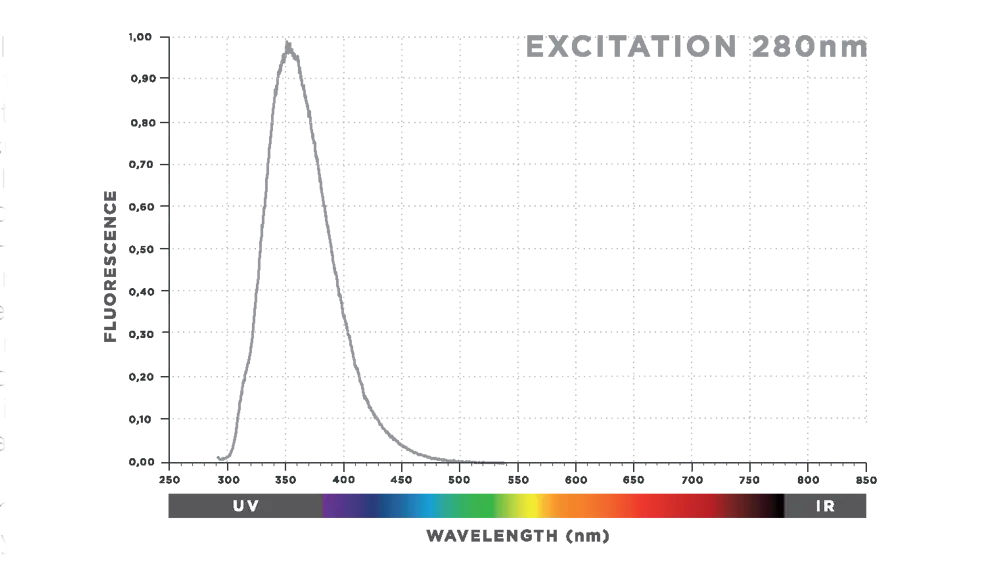Biomolecule Detection
Unique Innovation:
Inline Biomolecule Detection
Drinking water can contain various biologically active contaminants that, directly or indirectly, may be harmful to human health.
These substances – protein, humic acids, algae and the like – are traditionally detected by costly and time-consuming laboratory analyses. The innovative Aqualygate Monitoring System has an integrated fluorescence sensor to detect such biologically active substances in-line and in real-time.
Detection of Biomolecules by Fluorescence Spectroscopy
Fluorescence spectroscopy is an excellent tool for determining crucial dissolved organic matter (DOM). Until recently, this method was only available to high-end laboratories. With the improvement of sensor technology, such devices are now accessible in a wide wavelength range, in small sizes and at competitive prices. This makes the integration into the Aqualygate Monitoring System possible..


How Biomolecule Detection Works?
The water is excited at different wavelengths by LEDs built around the sensor. The micro-spectrometer detects the specific ranges of fluorescence emitted by the various organisms in the water (between 320 nm – 850 nm). This method can isolate the fraction of various pollutants effectively.
The following DOMs can be detected by the Aqualygate System:
• Protein (Tryptophan)
• Humic substances
• Green algae (chlorophyll)
• Blue algae (cyanobacteria)
The built-in fluorescent sensor combines the latest technologies in this real-time, in-line system, in a setup not previously offered by other solutions.
